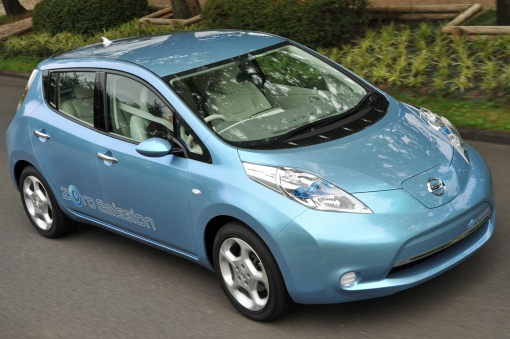When lay individuals consider the new electric economy as it pertains to transportation, they typically think of a trendy electric sports car or its corresponding charging station. I would venture to say that seldom, if ever, do these individuals think about the stodgy old bus. Well, the bus designed and built from Golden, CO based Proterra, formerly Mobile Energy Solutions, is far from the lumbering, belching bus your grandmother knew. The 6 year old company is dedicated to making the drive components and energy storage systems for electric and hybrid buses, delivery vans and other commercial models, as well as the vehicles themselves. Just this month, Proterra landed a $20 million investment from MK Energy and Infrastructure to build an assembly plant in Greenville, SC by 2011.
Unlike the majority of cars on the road, buses generally drive a fixed route that is highly predictable and routine. This repetitive pattern makes it the perfect vehicle to adopt a range restricting electric engine. Apparently, other cities feel the same way as Proterra has stated that as many as 21 transit agencies around the country had requested government funding for the purchase of more than $400 million worth of its vehicles.
From a technical perspective, the Proterra designed bus will travel 30 to 40 miles at 11 to 13 miles per hour before it needs a recharge, which it gets by passing under a contact arm at a bus stop or a bus yard. According to Proterra founder Dale Hill, batteries can be recharged in under 10 minutes. At present, the companies first and foremost objective is to reduce the price of the vehicle from approximatley $1 million to under $300,000. This can only be accomplished by manufacturing scale, an issue currently being addressed with the new South Carolina plant. From there, the largest technical challenge lies in extending the range of the battery and improving speed. 2012 appears to be the date that the company is targeting for these improvements.
While the electric car field is already crowded with competitors, the nascent electric bus and truck market is releatively spacious. Smith Electric Vehicles of Kansas City, MO is one of the other companies attempting to make a dent in the heavy vehicle electric market. For now however, it appears that Proterra has a significant headstart over its competitors in the US. Generally, a good trend in cleantech power and transportation is to look at China. If the nation of nearly 1.4 billion capitalists is pursuing an initiative, chances are it will have staying power in one form or another. Well, plenty of Chinese manufacturers and state owned companies are pursuing electric buses. Just one example here.
The electric bus has particularly outstanding potential. This market is truly massive. Just imagine a day in the next decade when cities like New York and Los Angelas have rapid bus networks that zip people across town while emitting zero noxious gas (so many more al fresco dining options…..). Or, envision a time when all school buses are powered by a battery, thereby making a mere mild buzz as they pass by and not the standard rumble? These days are no doubt coming. Likely, sooner than we might think. Companies like Proterra will help us get there.




July 13, 2010
The Transit Death Star
Posted by morangre under Public Transportation, Transportation Commentary | Tags: 42nd Street, Bus Rapid Transit, buses, Grand Central Terminal, Heartland Brewery, New York Port Authority, Port Authority Bus Terminal, Public Transportation |Leave a Comment
For thousands of travelers each day, for both commuters and tourists alike, the New York City Port Authority Bus Terminal serves as a portal to the “city that never sleeps.” By all accounts, this is one of the most bustling public transit hubs in the United States, as it serves over 58 million passengers annually. Simply stepping into the main terminal’s entrance on 8th Ave between 41st and 42nd streets, one wonders how this labyrinth even functions to serve it’s purpose of transporting passengers on buses throughout the Northeast. The answer is barely. For instance, just today, I had to wait 25 minutes from the time our bus returned to Port Authority until the time we alighted from the bus due to a last second gate logistic switch. In talking to other friends, apparently this type of experience is the norm, not the exception unfortunately.
It is no secret that buses are treated as second class citizens in New York City. Simply look to the lack of bus rapid transit lanes, a strategy that has shown time and again to work in South America and Europe. City planners and policy makers have always favored subways or commuter rail lines over bus transit. Nowhere is this more evident than in the comparison between Grand Central Station and the Port Authority Bus Terminal. One is a beacon of architectural reclamation and commercial triumph, the other is a seventh rate architectural structure whose only commercial highlight is that it contains a Heartland Brewery (brewery should be used loosely……) by one of the main entrances. Such an important transportation hub should be seen as an architectural landmark. Other nations seem to understand this, even China. Apparently, we in the US, especially in New York, missed the memo.
If the exterior architecture weren’t bad enough, perhaps one should take a closer look at the circuitous paths leading up to the actual bus gates. It is time for a Grand Central-esque overhaul. And while they are at it, why not let the revised structure rise to the sky with gleaming commercial office space like some of these 2008 proposals. I understand this is a massive capital investment that will probably bankrupt the city and state even further. The city and state probably don’t have a cool $10 billion just lying around these days. We must continue to put relevant infrastructure in place that will finally elevate the bus to its proper place alongside trains in the perception of the city public transit user.